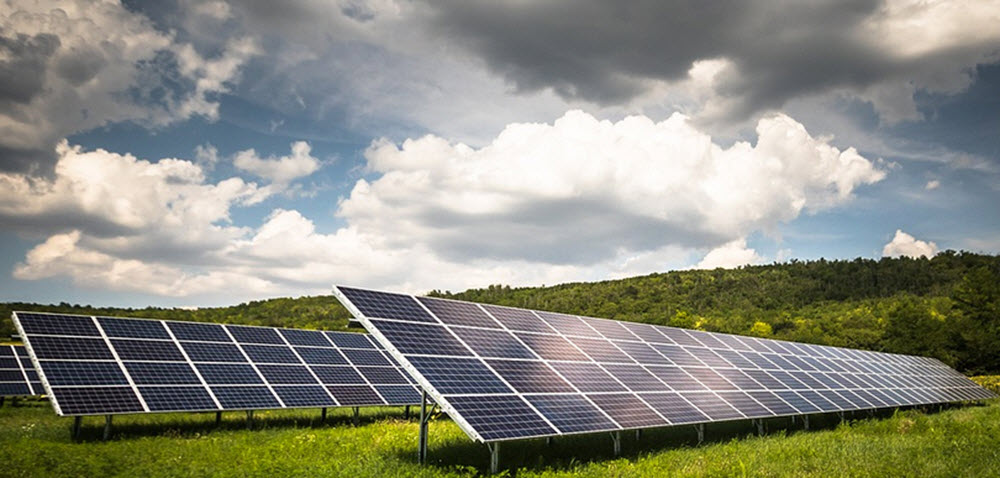Contents
Each hour, approximately 430 quintillion Joules of energy from the sun reaches our planet Earth. (That is 430 000 000 000 000 000 000 Joules.)
Only a minuscule fraction of this energy is currently being converted into thermal or electrical energy for human use, but the field solar power is growing each year and the technology is constantly becoming better at harnessing solar energy to generate electricity and carry out heating and cooling.
A major challenge within the field of solar energy is to construct batteries that are powerful enough to store vast amounts of energy while not being prohibitively expensive. Sunshine is only available during parts of the nychthemeron, while we want to use electricity, heating and cooling even when its dark outside. There is also the issue of not receiving enough daylight and heat because of weather conditions. Therefore, being able to store solar power is very important.

Solar technologies
The three main solar energy technologies are photovoltaics, solar heating & cooling, and concentrating solar power applications.
Photovoltaics
Photovoltaics turns sunlight into electricity via an electronic process.
Solar heating & cooling (SHC)
In traditional SHC systems, heat from the sun is used to heat up air or water. SHC systems are typically used to provide hot water and air heating or cooling.
Concentrating solar power (CSP) applications
CSP applications use the heat from the sun to run electricity-generating turbines.
What are solar panels?
A solar panel is an assembly of photovoltaic cells in a framework. Solar panels convert sunlight to direct current electricity.
More specifically, a collection of photovoltaic cells is called a photovoltaic module, and a collection of photovoltaic modules is called a photo-voltaic panel (solar panel). A system of photo-voltaic panels is called a photo-voltaic array.
Background
Solar panels might feel like a super-modern thing, but the first commercial solar panel was actually built back in 1881. The history of the solar panel goes back to 1839, when the French physicist Edmond Becquerel noticed that some materials were capable of creating an electrical charge if exposed to light. (The photovoltaic effect.)
The first commercial solar panel was built by United States inventor Charles Fritts in 1881. Fritts used selenium coated with a very thin layer of gold. In 1884, the world´s first solar array was installed on a rooftop in New York City, and it was using Fritts´s selenium cells.
The modern solar cell was patented by United States semiconductor researcher Russel Shoemaker Ohl, who created it in 1939 and patented it in 1941 (U.S. Patent 2,402,662).
Solar module producers
In the year 2019, the world´s five major solar module producers in terms of shipped capacity were Jinko Solar, JA Solar, Trina Solar, LONGi Solar and Canadian Solar. All of them are headquartered in China, except for Canadian Solar which is headquartered in Ontario, Canada.
| Producer | Shipments in 2019 (GW) |
| Jinko Solar | 14.2 |
| JA Solar | 10.3 |
| Trina Solar | 9.7 |
| LONGi Solar | 9.0 |
| Canadian Solar | 8.5 |
Maintaining solar panels
Modern solar panels tend to have a conversion efficiency of around 20% when first installed, but the accumulation of particles on top of them (dust, sand, pollen, etc) will reduce that efficiency over time. Having the solar panels correctly cleaned as needed is therefore recommended to keep the efficiency up. How often the panels need to be cleaned will depend on local factors. In some regions, the accumulation of particles is comparatively slow and frequent cleanings are not a necessity.
Solar chargers
A solar charger converts solar energy into electricity and can be used to charge battery-run devices, such as smartphones. Solar chargers are generally portable, but fixed solar chargers also exist and can be placed on rooftops, base stations on the ground, etc. Special fold-out models have been developed to sit on the dashboard of cars.
Some of today´s modern commercially available solar chargers can charge lead acid or Ni-Cd battery banks up to 48V and 4000 Ah capacity.